Observed by Hindus 2017 date Sunday, 12 March Siblings Hiranyakashipu | Date per Hindu calendar 2018 date Saturday, 1 March Nephew Prahlada | |
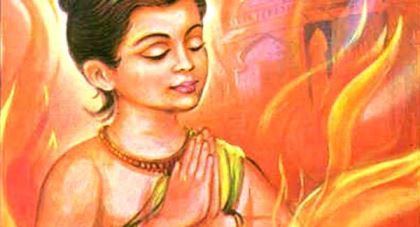 | ||
Type religious, cultural, spring festival | ||
Holika (Sanskrit: होलिका) was a demoness in Hindu Vedic scriptures, who was burnt to death with the help of God Vishnu. She was the sister of King Hiranyakashipu and aunt of Prahlad.
Contents
- Burning of holika chowtaal singing
- Holika and Prahlad
- Krishna and Radha
- Origin of Holika Dahan
- References
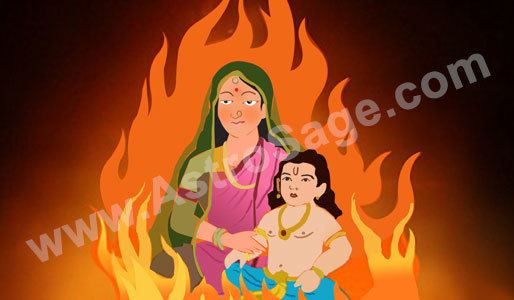
The story of Holika dahan (Holika's death) signifies the triumph of good over evil. Holika is associated with the annual bonfire on the night before Holi, the Hindu festival of colors.
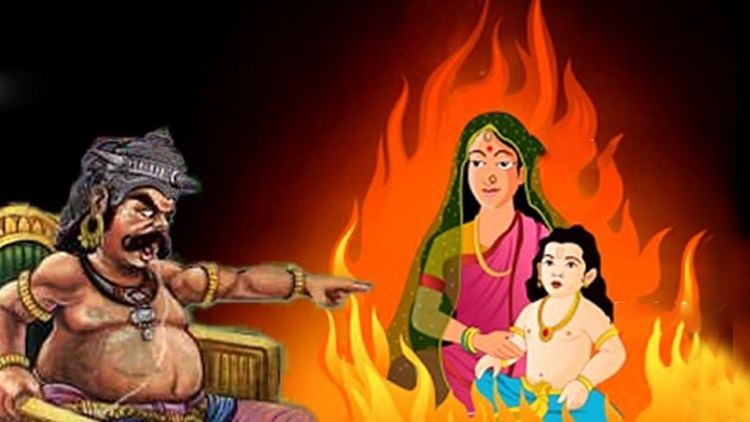
Burning of holika chowtaal singing
Holika and Prahlad
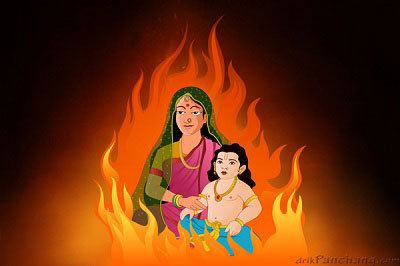
According to Bhagavat Purana, a king named Hiranyakashipu who, like many demons and Asuras, had the intense desire to be immortal. To fulfill this desire, he performed the required Tapas or penances until he was granted a boon by Brahma. Since the Gods rarely granted immortality, he used his guile and cunning to get a boon which he thought made him immortal. The boon gave Hiranyakashyapu five special powers: he could be killed by neither a human being nor an animal, neither indoors nor outdoors, neither at day nor at night, neither by astra (projectile weapons) nor by any shastra (handheld weapons), and neither on land nor in water or air. As this wish was granted, Hiranyakashyapu felt invincible, which made him arrogant. Hiranyakashyapu decreed that only he be worshiped as a God, punished and killed anyone who did not accept his orders. His son Prahlad disagreed with his father, and refused to worship his father as a god. He continued believing and worshipping Lord Vishnu.
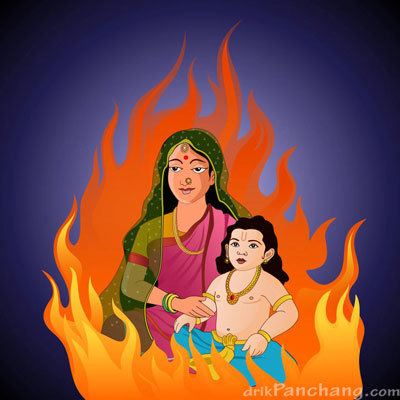
This made Hiranyakashipu very angry and he made various attempts to kill Prahlad. During a particular attempt on Prahlad's life, King Hiranyakashyapu called upon his sister Holika for help. Holika had a special cloak garment that prevented her from being harmed by fire. Hiranyakashyapu asked her to sit on a bonfire with Prahlad, by tricking the boy to sit on her lap. However, as the fire roared, the garment flew from Holika and covered Prahlad. Holika burnt to death, Prahlad came out unharmed.
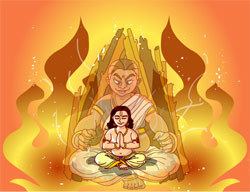
Vishnu appeared in the form of Narasimha - half human and half lion, at dusk (when it was neither day nor night), took Hiranyakashyapu at a doorstep (which was neither indoors nor outdoors), placed him on his lap (which was neither land, water nor air), and then eviscerated and killed the king with his lion claws (which were neither a handheld weapon nor a launched weapon). In this form, the boon of five special powers granted to Hiranyakashyapu were no longer useful. Prahlad and the kingdom of human beings were thus free from the compulsion and fear of Hiranyakashyapu, showing the victory of good over evil.
Krishna and Radha
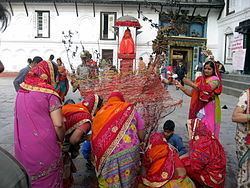
This symbolic myth is common in some parts of India, where Holi is also called Phagwah and Holika is instead called Pootna or Putna. Kansa, king and uncle of Krishna, sensed danger to his life from his infant nephew when he grows up. Kansa sent the demon Putna, disguised as a woman, to poison the infant under the guise of breastfeeding. Baby Krishna sucks not only the poisonous milk but Putna's blood too, transforming her back into a demon. She runs and bursts into flames while the Infant Krishna transitions into his characteristic dark blue skin color.
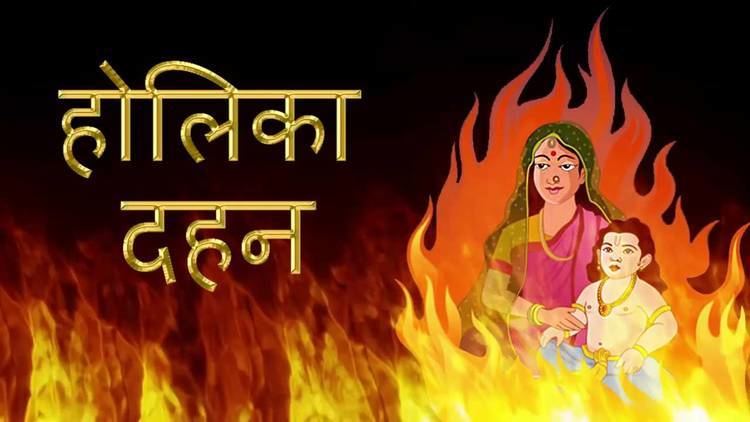
The day before Phagwah is celebrated by burning Putna. According to the myth, in his youth, Krishna despairs about fair skinned Radha and whether she or other Gopis (girls) will like him because of his skin color. His mother tired of the desperation, asks him to approach Radha and color her face in any color he wanted. This he does, and Krishna and Radha became a couple. The playful coloring of face of Radha has henceforth been celebrated as Holi.
Origin of Holika Dahan
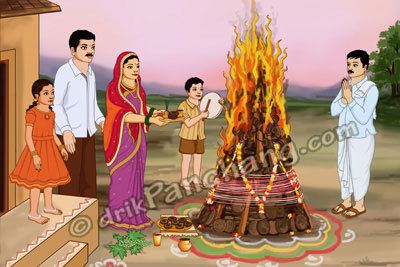
For many traditions in Hinduism, Holi celebrates the death of Holika in order to save Prahlad and we see where Holi gets its name. The night before Holi, pyres are burnt in North India in keeping with this tradition. It should also be noted that in some parts of India the day is actually called Holika. There are other activities associated with the story of Prahlad, but the burning of Holika is the one that we can most directly associate with Holi. The story as a whole is testament to the power of devotion (bhakta) over the evil represented by King Hiranyakashyapu, as Prahlad never lost his faith.
The burning of Holika is the most common mythological explanation for the celebration of Holi. In different parts of India varying reasons are given for Holika's death:
